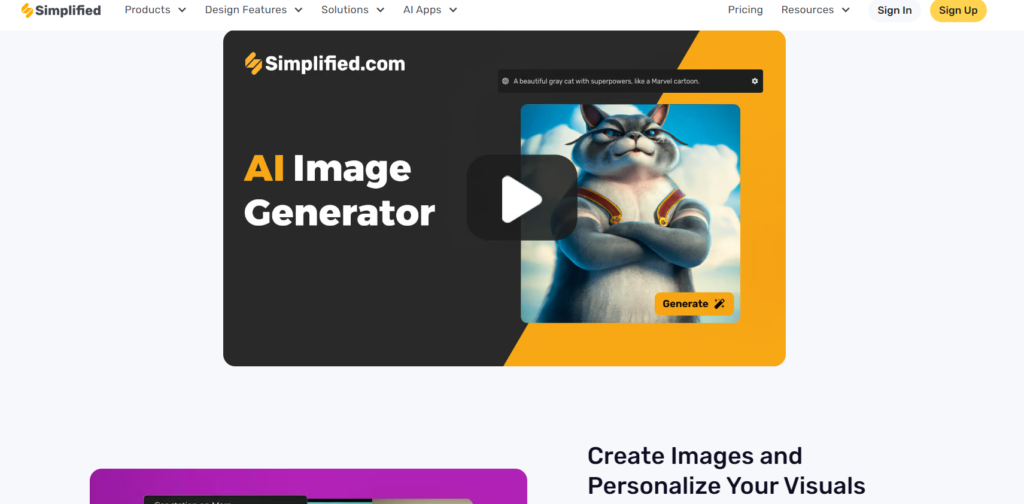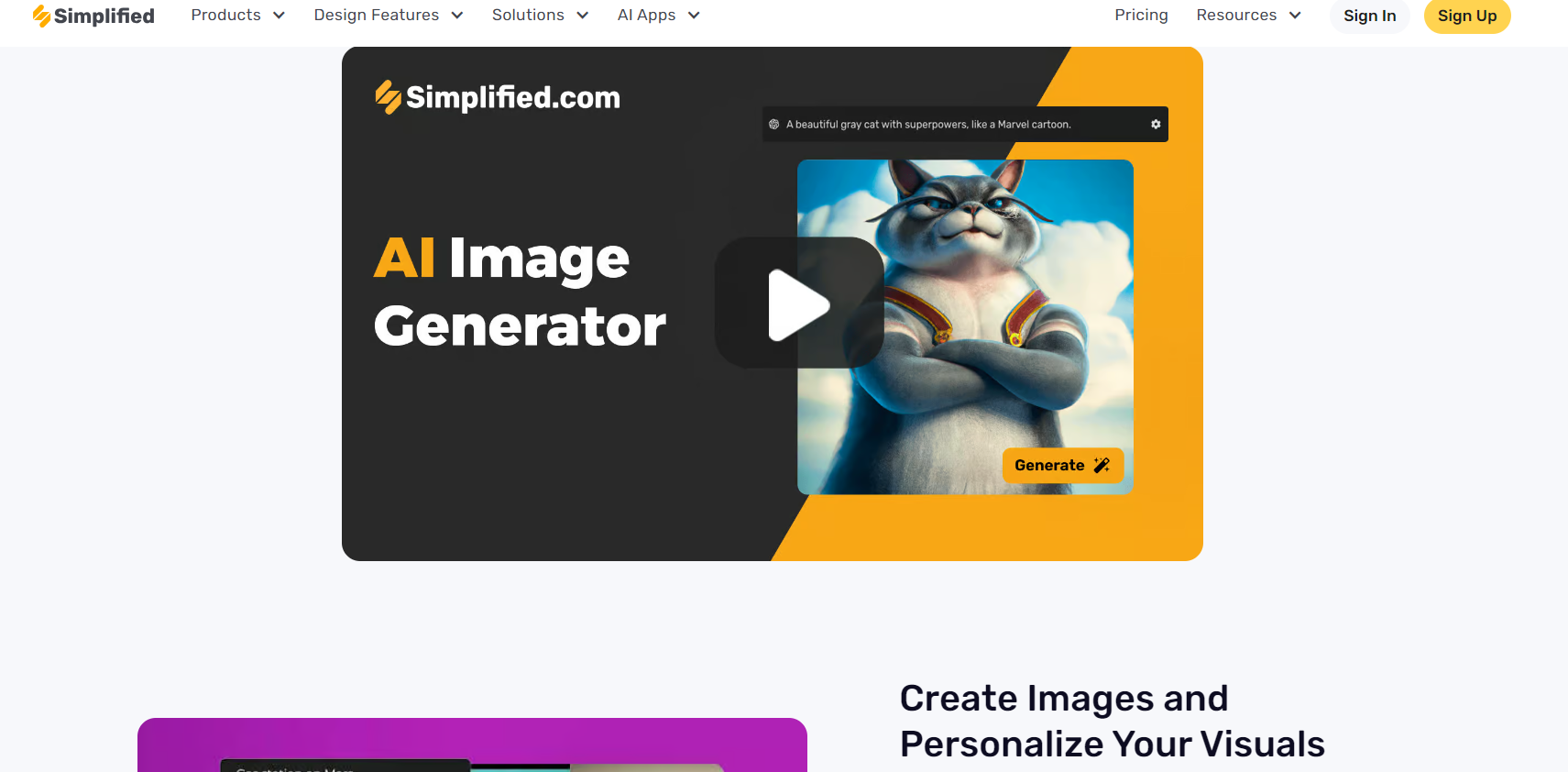The DALL-E 2 Alternatives model, a neural network-based picture and text generating model created by OpenAI, has a variation called DALL-E 2. Natural language prompts like “a two-story pink house with a white fence and a red door” or “a cat wearing a shark costume riding a Roomba” can cause DALL-E 2 to produce photos of high quality. Additionally, text that explains photos can be generated using it.

Table of Contents
What is Dall-E (Dall-E 2), and How Does it Work?
DALL-E 2 is a state-of-the-art AI-powered image-generating platform created by OpenAI. It is the advanced and improved successor of DALL-E. It can produce incredibly realistic and detailed pictures based on textual descriptions by utilizing deep learning techniques.
It uses an encoder-decoder approach, which means that given text is first encoded into the system’s input, analyzed by the system, and then sent through a decoder to produce a visual image.
What are some DALL-E 2 alternatives?
Now, we’ve gotten to the main part! If you are looking for a DALL-E 2 alternative, there are plenty of options available.
Here are 5 of some of the best DALL-E 2 alternatives:
1. Simplified

Simplified’s AI art generator lets you generate images based on your input. This means you can type any command and the tool will generate the realistic images for you. It is an all-in-one app that separates it from the other AI art generators on this list.
Aside from allowing you to generate your artwork from a text prompt, you can also use Simplified to generate blog posts, schedule social media posts, and collaborate with teams.
Pricing:
• Free forever account with monthly free credits
Pros:
• Uses Stable Diffusion and DALL-E
• Do more than just generating images and art. Edit Images and create social media post
• Publish to social media directly after creating your artwork
2. Starryai

Starryai was created to make AI art generation easier. It is one of the best DALL-E 2 alternatives and allows you to maintain 100% ownership of your creations.
This art generator uses two state-of-the-art AI models- Orion and Altair. Orion uses the Clip-Guided Diffusion model, while Altair uses the VQGAN-Clip model to render artwork. Because of these models, the app can create truly unique and inspiring artwork.
Pricing:
• The app is free on iOS and Android, but you have to pay for art credits.
Pros:
• The AI art generator has an easy-to-use interface;
• The generated art can be easily shared on social media platform
• Generate artwork with just a simple prompt, including emojis
Cons:
• Starryai’s AI is not the most advanced
Bonus: 10 DALL-E 2 Alternatives That Make AI Art Creation a Breeze
3. Fotor (GoArt)

Fotor is a fantastic software that allows you to quickly edit your pictures and make them look stunning. This AI art generator can also turn any photo into a beautiful painting in a matter of seconds.
Fotor has the option to generate oil paintings and sketches into cartoons. With over 300 million users, including both professionals and amateurs, Fotor’s advanced effects and tools make pictures look professional.
Pricing:
• $8.99/Monthly
• $39.99/Yearly
Pros:
• Easy to use;
• Over 50 unique painting filters and styles
• Available in 9 different languages;
• Beginner-friendly.
Cons:
• It often lags;
• The software has limited features.

Dream by WOMBO is an AI-generated art tool that lets you create high quality images. All you have to do is enter a textual description, select your art styles, and get stunning artworks in seconds. This DALL-E 2 alternative also allows you to save or purchase prints of your artwork.
Pricing:
• Free
Pros:
• Frequent app updates
• No account registration is needed
• Offers 15 different art styles
• Generates very realistic images
• You can share your artworks
Cons:
• Too many ads
• Limited in some countries
5. NightCafe

With NightCafe, you can create AI masterpieces. This AI image generator uses neural style transfer (a machine learning technique that involves a deep neural network to identify the unique stylistic features of a ‘style’ art and then apply those features to an ‘input’ art). It is a text-to-art generator that creates artwork from just a textual description. It is also a popularly used NFT art creator.
Pricing:
With NightCafe creator, you can create up to 5 free artworks per day. If you want to print your artwork or use the software for longer, you can pay for a credit plan. The credit plans include:
• $9.99 monthly for 100 credits
• $19.99 monthly for 250 credits
• $49.99 monthly for 700 credits
• $79.99 monthly for 1500 credits
Pros:
• Easy to use interface
• Artworks are sharable in a community
• Create a single image using multiple styles
• Good for creating bulk art
• It generates high-resolution artwork.
Cons:
• Take longer processing times for images
• Earn credits at $0.08/credit & $0.20/credit to continue creating
Very good written article. It will be valuable to anybody who usess it, including myself. Keep up the good work – looking forward to more posts.
Thank you for another informative web site. Where else could I get that kind of info written in such a perfect way? I have a project that I am just now working on, and I’ve been on the look out for such information.
After study a few of the blog posts on your website now, and I truly like your way of blogging. I bookmarked it to my bookmark website list and will be checking back soon. Pls check out my web site as well and let me know what you think.
Pretty! This was a really wonderful post. Thank you for your provided information.
Terrific paintings! This is the kind of info that should be shared around the web. Disgrace on Google for no longer positioning this put up upper! Come on over and discuss with my website . Thank you =)
Aw, this was a very nice post. In thought I wish to put in writing like this moreover – taking time and actual effort to make a very good article… however what can I say… I procrastinate alot and in no way appear to get one thing done.
Thank you, I have recently been looking for information approximately this topic for ages and yours is the greatest I’ve came upon so far. But, what about the conclusion? Are you certain about the supply?
Very nice post and straight to the point. I am not sure if this is actually the best place to ask but do you people have any ideea where to hire some professional writers? Thx 🙂
My spouse and i have been very fortunate John managed to carry out his homework through the precious recommendations he gained out of the web site. It is now and again perplexing to just be making a gift of techniques that many some others may have been trying to sell. We really do know we’ve got the writer to be grateful to for that. All of the explanations you have made, the easy site menu, the relationships you will help engender – it’s everything powerful, and it is making our son in addition to the family do think this issue is amusing, which is certainly very vital. Thank you for everything!
Excellent blog you have here but I was curious if you knew of any message boards that cover the same topics discussed in this article? I’d really like to be a part of group where I can get feedback from other knowledgeable individuals that share the same interest. If you have any recommendations, please let me know. Cheers!
I discovered your weblog web site on google and check just a few of your early posts. Continue to keep up the superb operate. I just extra up your RSS feed to my MSN News Reader. Searching for ahead to studying extra from you afterward!…